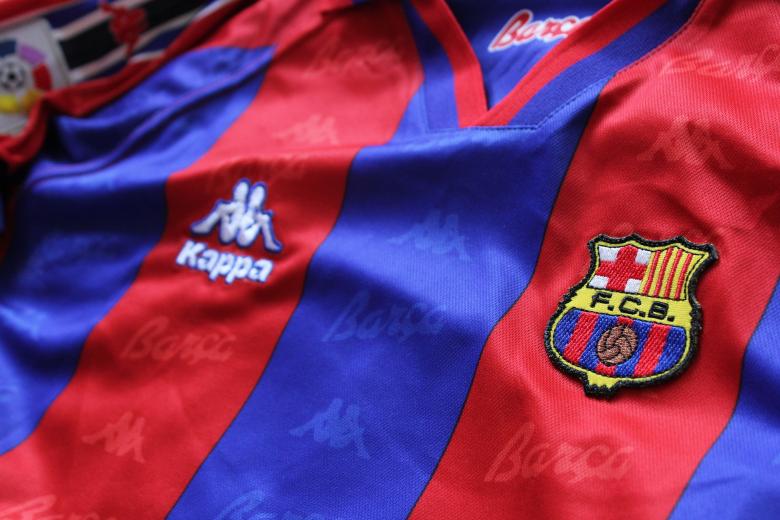The risk in the personalisation trend of famous brands
Nowadays, companies let consumers ‘play’ with their trademark: in the ‘Your Nutella – your way’ campaign the customer is invited to create his name label on a Nutella jar in the classic design of the Nutella logo. Nevertheless, there is an enhanced risk of trade mark dilution.
In October 2015, Ferrero S.p.A. came up with the above-mentioned campaign. Most of us know the classic design of Nutella from its font with its first letter in black, while the other letters are in red. In this type of campaign, customers are thus invited to play with the existing trade mark. However, Ferrero S.p.A. was not the first one to come up with this personalisation trend: in the summer of 2013, the famous Coca-Cola Company launched their ‘Share a Coke with’ advertisements where your own given name in the iconic Coca-Cola font could be found on Coca-Cola drinks in any store (selling Coca-Cola). In my opinion, this was the first impressive campaign where consumers got so closely involved with the brand itself. Also last year, the Coca-Cola Company struck again, but then with their ‘Share a Coke in’ summer campaign: hereby the Coca-Cola Company replaced its logo with your favourite holiday destination, which was linked to a big European competition to win a trip to one out of 76 holiday destinations.
These brand variants are a ‘hot topic’ since they involve remarkable marketing campaigns for famous marks, nonetheless this can induce legal risks for the trade mark itself: the personalisation trend can bring about trade mark dilution. Trade mark dilution can be defined as being the gradual whittling away of the identity and the distinctive character of a trade mark with reputation, which results in a form of damage to the goodwill of the business with which the name is connected. The damage of the blurring of the distinctiveness of the mark should result in the consumer no longer having an immediate association with the goods for which it is registered and used.
It is an interesting point of view to examine trade mark dilution appearing in these marketing campaigns, since trade mark dilution legally requires one to take advantage of the reputation and distinctiveness of someone’s brand, whereas in the case at hand the damage might be self-inflicted. Ferrero S.p.A. and the Coca-Cola company themselves came up with the idea to let consumers personalise their consumables. Legally speaking there is no case of infringement.
In the given campaigns, it can be noticed that the distinctive character of the trade mark is lessened, by using similar signs (such as ‘H-oney’, or ‘D-aan’, or ‘E-va’) on the products of Nutella for example, whilst using the same graphic elements and colours of the sign ‘N-utella’. When there are many variations of a trade mark, the strength of the logo is diminished. Whereas ‘Nutella’ is protected both as a European word trade mark as a European figurative trade mark, not only its text is protected, but also its non-standard lay-out, such as the font and colour scheme. The strength of ‘Nutella’ is thus not only determined by the text, but also by the lay-out. However, according to developed case law, words still speak louder than graphic elements and colours, therefore trade mark owners must be careful when giving consumers this opportunity of personalisation.
However, the ‘cons’ of these campaigns are not only limited to trade mark dilution. In the light of the economic efficiency for companies, it is necessary to keep all possible consequences in mind when kicking off with such a campaign: not only do the companies face a risk of trade mark dilution, but there is also an enhanced risk for the company that their brand will be weakened. Less-renowned trade mark owners need to think carefully before they start with a campaign like this, gambling with their created goodwill. Furthermore, the brand can get damaged. Companies attentively need to consider the safeguards that they have to build in to prevent racist or embarrassing remarks from being put on their products. E.g. in Australia consumers came up with the idea to create a ‘diabetes’ label on the Nutella jar, which widely circulated on the Internet. In general, companies should reserve the right to pursue such abusers: they have to be granted IP protection before the launch of a campaign characterized by the personalisation of consumables. Setting terms and conditions, tying consumers into end user licences or notifying consumers of the reservation of rights on platforms might help these companies to safeguard their brand.
Nevertheless, it is clearly uncontested that strong brands, such as Nutella and Coca-Cola, can resist these (temporal) campaigns; these companies ‘can deal with’ a small bit of dilution. However, since trade mark protection aims to maximise the trade mark as much as possible, it is important for every trade mark owner to keep his famous trade mark strong and distinctive, in order to avoid self-inflicted dilution and to protect the trade mark owner to go after the ‘real’ infringers.
| Written by Stéphanie de Potter Image by Flickr More blogs on Law Blogs Maastricht |
-
Madrid Commercial court refers UEFA & FIFA’s anti-competitive kick to the ECJ
In early 2021, Europe’s twelve leading football clubs joined hands to create the European Super League. Despite the presence of notable clubs such as Liverpool, Manchester United, Milan, Barcelona and Real Madrid, the League soon fell apart. Unable to convince those on the football field, the three...

-
Mind if I mine?
The EU recently introduced text and data mining exceptions to copyright infringement. However, they are too narrow and situation-specific to enable scientific development. In my master thesis, I suggest adopting a non-enjoyment exception for new technological uses, including text and data mining.

-
Protecting trade marks in virtual reality
While the trade mark system seems to embrace the expansion of trade marks to Virtual Reality, an intervention is required when an interplay between the virtual and real-world exists.
